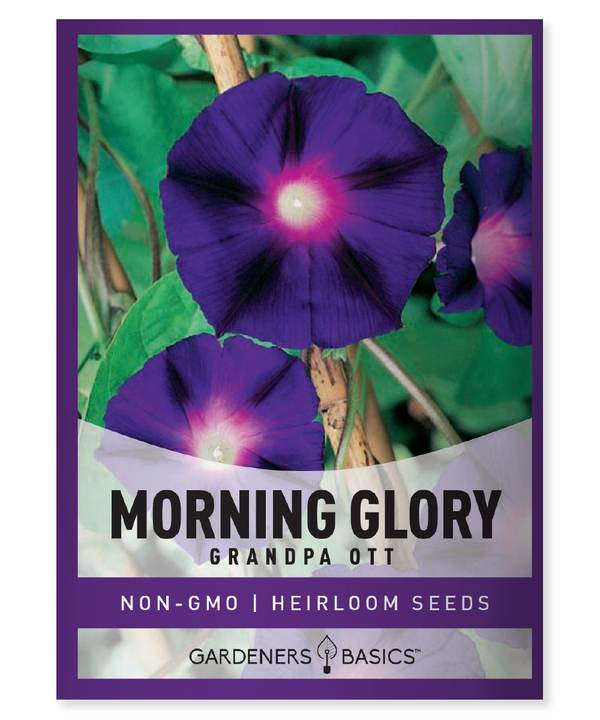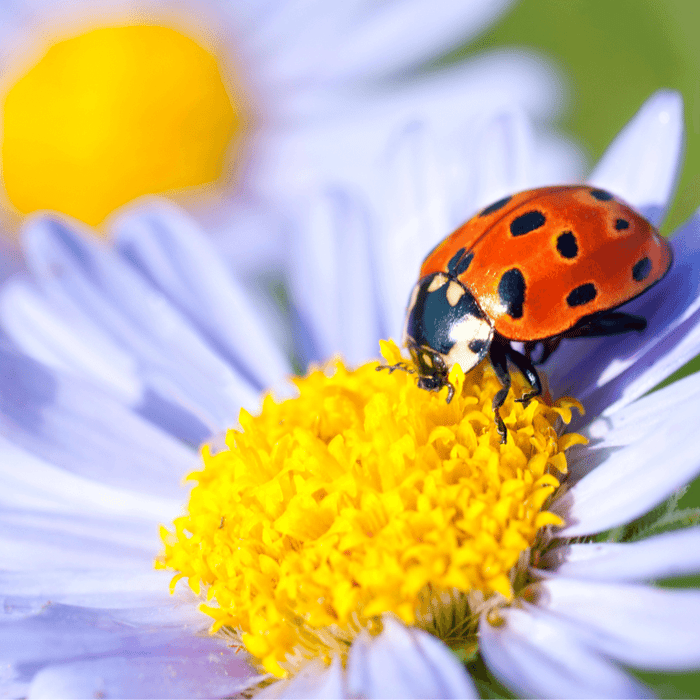The Misconception
It's a common belief that morning glories only bloom in the morning. But do morning glories only bloom in the morning? Is this true?
As someone who has spent countless mornings staring at my garden, waiting for these beautiful flowers to open up, I can attest that this misconception has some truth. However, it's not entirely accurate.
What are Morning Glories?
Before we dive into the "morning" aspect of morning glories, let's take a moment to appreciate these stunning flowers. Morning glories (Ipomoea purpurea) are annual vines that belong to the Convolvulaceae family. They're native to Central and South America but have become famous worldwide due to their striking blooms and ease of cultivation.
The flowers come in various colors, including blue, pink, purple, red, and white. They have trumpet-shaped blossoms up to 3 inches wide and grow on tall stems with heart-shaped leaves.
Morning glories grow from seed relatively easily. They do require a little extra attention than other flower seeds.
Heavenly Blue Morning Glory Seeds

$2.49
Heavenly Blue Morning Glory Seeds - Non-GMO, Heirloom, Open-Pollinated, Non-Hybrid - Planting Instructions, Growing Guide, and More Elevate your garden with Heavenly Blue Morning Glory seeds, a classic and stunning vining flower variety that delivers vibrant, sky-blue blooms with radiant… read more
The Truth about "Morning" Glory Blooms
Now back to the burning question: do morning glories only bloom in the morning? The answer is both yes and no. Morning glories do indeed get their name from their blooming habits.
Their flowers typically open early in the morning when temperatures rise and remain open until late afternoon or evening when darkness falls or temperatures begin dropping again. However, there are some exceptions to this rule.
Some varieties of morning glories may bloom throughout the day, while others may only bloom at night! That means if you're an early riser hoping for a glimpse of these beauties opening up before your eyes each day – you might be out of luck depending on which variety you've planted!
Why Does it Matter?
So why does it matter whether morning glories only bloom in the morning? For starters, knowing the facts is always good instead of relying on outdated beliefs.
But beyond that, understanding more about these flowers' blooming habits can help you care for them better. If you want to encourage morning glory blooms, plant your seeds or seedlings in an area with plenty of sunlight.
They love the warmth and total sun exposure. Additionally, provide adequate water and nutrients to ensure healthy growth.
Knowing that some varieties may bloom at night can also help you plan your garden design better. Imagine a beautiful evening garden with fragrant night-blooming morning glories!
While morning glories indeed get their name from their early-morning blooming habits, not all varieties strictly adhere to this schedule. So go ahead and enjoy this stunning flower any time of day – they'll be happy to show off their beauty whenever the weather is right!
Morning Glory Basics
Overview of Morning Glories: The Most Beautiful and Misunderstood Flower
Morning glories are some of the most beautiful flowers in the world. They come in various colors, from deep purple to bright pink, creamy white to vivid red. Some morning glories are even multi-colored or striped.
But despite their beauty, morning glories often get a bad rap for being invasive or unruly. Proper care and attention make these stunning flowers a wonderful addition to any garden.
One thing that makes morning glories unique is their ability to easily climb and cover walls, trellises, fences, and other structures. This makes them ideal for creating privacy screens or adding some vertical interest to your garden - just be sure they have something sturdy to climb on!
Types of Morning Glories: Which Ones Are Right For You?
There are over 100 species of morning glory plants worldwide! However, only a handful are commonly grown as ornamental plants.
The two most popular types are Ipomoea tricolor (also known as Heavenly Blue Morning Glory Seeds) and Ipomoea purpurea (also known as Common Morning Glory/Grandpa Ott Morning Glory Seeds). Heavenly Blue has large blue flowers that bloom from early morning until mid-day. Adding morning glories is a great way to expand your heirloom flower garden.
These impressive blooms can grow up to 4 inches across and make a statement in any garden. Common Morning Glory has smaller flowers than Heavenly Blue but comes in many colors, including white, pink, red, and purple.
Another type of morning glory is Ipomoea nil (Japanese morning glory). They have smaller blooms than the other types but make up for it with their wide range of colors.
Characteristics of Morning Glories: Fascinating And Sometimes Overlooked
In addition to their stunning blooms, morning glories have many fascinating, often overlooked characteristics. For example, did you know that some species of morning glory can only be pollinated by hummingbirds or hawkmoths?
They also produce large amounts of nectar, making them an important food source for these pollinators. Another interesting fact about morning glories is their unique way of opening their flowers in the morning.
The process is called circadian rhythm, and it is triggered by sunlight. The flowers begin to unfurl themselves in the early morning hours and then close up again in the late afternoon or evening.
Morning glories are also known for their seeds which can be toxic if ingested in large quantities. This makes them a popular choice for bird lovers as the plant's seeds are a food source for birds during winter months when other food sources may be scarce.
Understanding the basics about this beautiful flower can help appreciate it beyond its looks. The following section will explore whether Morning Glories only bloom during mornings.
Grandpa Ott Morning Glory Seeds

$2.49
Grandpa Ott Morning Glory Seeds - Heirloom, Non-GMO, Vibrant Purple Climbing Blooms Transform your garden into a vibrant oasis with Grandpa Ott Morning Glory seeds! These stunning heirloom, non-GMO, non-hybrid, and open-pollinated seeds produce rich, deep purple flowers with a striking… read more
Morning Glory Blooming Habits
Why Morning Glories Are Known for Blooming in the Morning
Morning Glories have a reputation for being early risers, but why is that? The answer lies in the plant's natural circadian rhythm.
Circadian rhythms are internal clocks that regulate various physiological processes in all living organisms, including plants. This clock influences when and how long the flowers bloom in morning glories.
Specifically, morning glories produce chemicals called phytochromes that are sensitive to light. When exposed to sunlight or even artificial light sources like streetlights or porch lights, these phytochromes trigger a cascade of biochemical reactions that lead to blooming.
Interestingly, morning glories aren't the only plants with a circadian rhythm linked to light. Many other plants also have internal clocks driven by phytochrome signaling but not every plant blooms at a specific time of the day like morning glories do.
The Science Behind the Blooming Habits of Morning Glories
The scientific reason why morning glories bloom in the early hours of the day is fascinating. It all comes down to their response to blue wavelengths of light emitted during sunrise.
When morning light hits the plant's leaves and flowers, it triggers specific enzymes within the plant cells, which are responsible for opening up stomata (tiny pores on leaves) and pushing water up through the stem and into flower buds, causing them to open up as well. This process is known as phototropism -a movement towards or away from sunlight- which enables plants like morning glory flowers to respond positively only when exposed to blue light emitted during sunrise; Once this blue wavelength disappears midday, its reaction slows down until it stops completely by nightfall.
Factors That Affect When Morning Glories Bloom
Several factors can influence when morning glories bloom. One of the most significant factors is temperature.
Morning glories prefer warm temperatures between 60-85°F, and if it gets too hot or cold, they may not bloom. Another factor that affects morning glory blooming habits is soil quality.
Good soil rich in nutrients will promote healthy growth and encourage more blooming. Poor soil, on the other hand, can lead to stunted growth and fewer flowers.
Watering frequency can also impact when morning glories bloom. Overwatering can cause roots to rot and decrease blooming while underwatering can lead to drought stress that reduces flower production.
Understanding the science behind why morning glories only bloom in the morning is fascinating and very practical for gardening enthusiasts who want to know how to effectively cultivate these beautiful flowers. Knowing what factors influence their blooming habits can help gardeners create optimal growing conditions for their plants and ensure a bountiful harvest of stunning blooms year after year!
Wildflower, Perennial, & Annual Flower Seed Kit | 35 Variety Pack

$29.95
$49.95
35 Flower Seeds Variety Pack – Heirloom, Non-Hybrid, Non-GMO, Open-Pollinated – Perfect for Pollinator-Friendly Gardens Transform your garden with our 35 Flower Seeds Variety Pack, offering a stunning and diverse selection of heirloom, non-hybrid, and non-GMO seeds. Each variety in… read more
Beyond the Morning Bloom: Lesser-Known Facts About Morning Glories
Other times when morning glories may bloom besides in the early hours of the day
Contrary to popular belief, morning glories do not exclusively bloom in the morning. While their name suggests otherwise, these flowers can continue to bloom throughout the day and even into the evening. In fact, some varieties of morning glories are known for blooming later in the day or during cloudy weather.
But don't be mistaken - just because they may bloom beyond sunrise doesn't mean they lack their signature charm. In fact, watching these beautiful flowers open up at different times of the day can be a fascinating experience.
How weather conditions can affect when and how long a morning glory blooms
Morning glories are sensitive creatures significantly influenced by environmental factors such as temperature and humidity. While they may typically open their blooms early in the day, cooler temperatures may keep them closed longer than usual. However, on a hot summer's day, you might find that they open earlier and close sooner than on a chilly spring morning.
Rain showers can also impact how long a morning glory will stay in bloom. Heavy rainfall or high humidity can cause petals to wilt and fade faster than typical dry conditions.
The history and cultural significance of morning glory flowers
The symbolism behind these lovely flowers is also worth noting. In many cultures worldwide, including Japan and China, morning glories represent love and affection shared between two people.
They are often given as gifts to express romantic feelings towards another person. Native American cultures, such as Navajo tribes from the Arizona region, consider it one of their sacred plant medicines, which has many healing properties to cure wounds & skin infections.
Furthermore, some religious traditions associate morning glory with spiritual enlightenment or rebirth due to their ability to "reawaken" each morning. This association makes them a popular choice for use in meditation gardens or as part of personal spiritual practices.
Morning glories are fascinating flowers with much more to offer than just a pretty bloom during the early hours of the day. From their unique blooming habits to rich cultural significance, these stunning flowers have captured the hearts of many for centuries.
Conclusion of Do Morning Glories Only Bloom in the Morning
After researching and writing about morning glories, it is clear that these beautiful flowers are not just a one-trick pony with their blooming habits. While it is true that morning glories tend to bloom in the morning, many other factors affect when and how long they bloom. The science behind morning glory blooms is fascinating, and appreciating these flowers' different types and colors adds to their allure.
While morning glories are known for blooming in the early hours of the day, there is much more to these flowers than meets the eye.
Summary of Main Points Discussed in Article
Throughout this article, we have explored the basics of morning glories - including different types and characteristics. We have also delved into why morning glories are known for blooming in the morning - discussing various scientific factors that contribute to their unique behavior.
Beyond this, we have uncovered lesser-known facts about morning glories, such as when they may bloom at other times than in the early hours of the day or how weather conditions affect them. We have also discussed the historical and cultural significance of these beautiful flowers.
 Final Thoughts on Why Understanding More About This Beautiful Flower is Important
Final Thoughts on Why Understanding More About This Beautiful Flower is Important
As someone who loves nature and all its wonders, I find it important to appreciate even seemingly small parts, such as specific types of flora or fauna like Morning Glories. We as humans need to understand our surroundings better to protect them from our excesses while also enjoying them responsibly in whatever way we deem appropriate.
It's fascinating how complex some plants like Morning Glories can be despite seeming simple at first glance -- seeing beauty where others don't highlight a deeper understanding gained through curiosity which ultimately benefits us all. Through a better understanding of morning glories, we can appreciate the beauty and wonder of nature and work to preserve it for future generations to enjoy.







